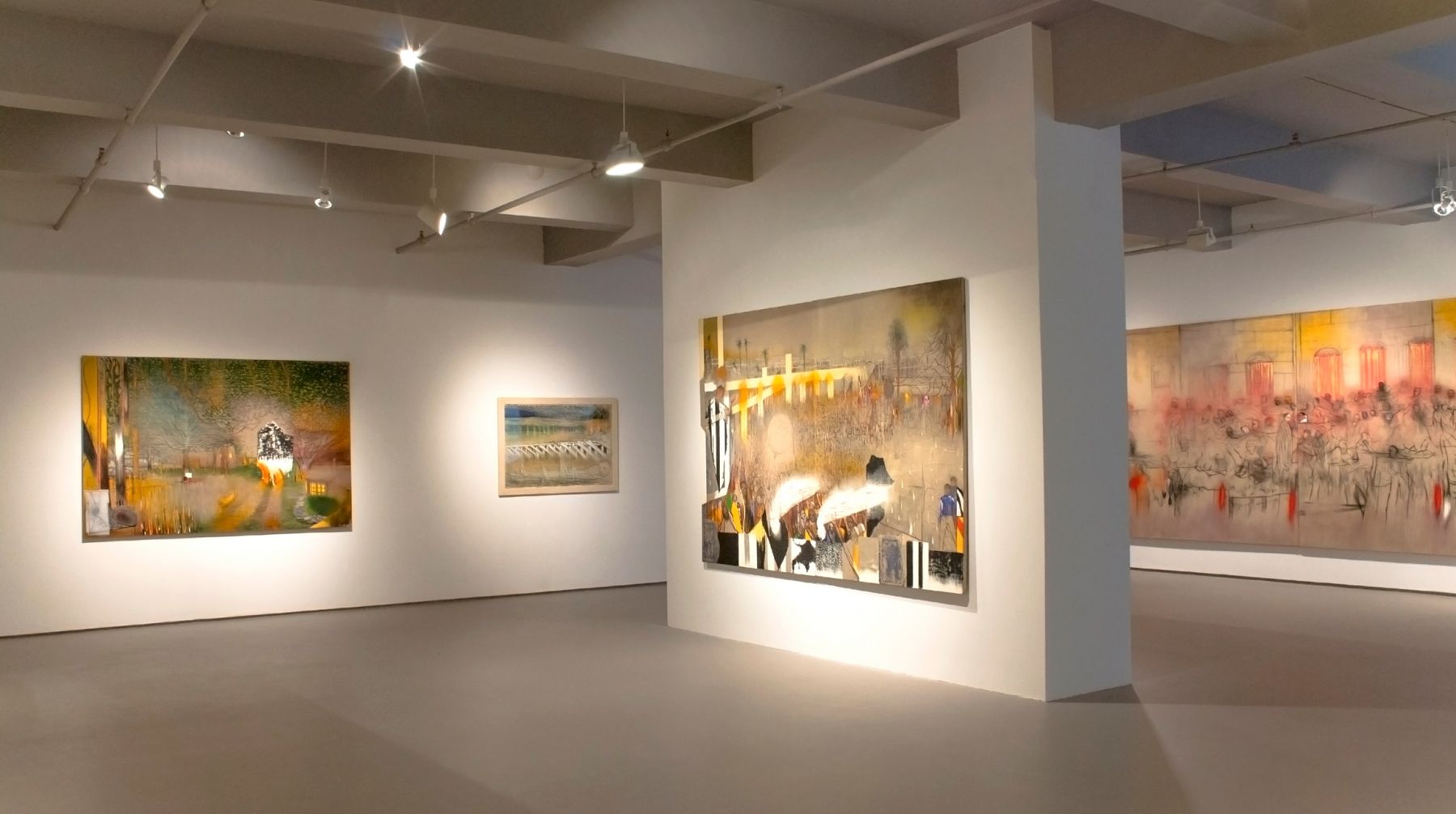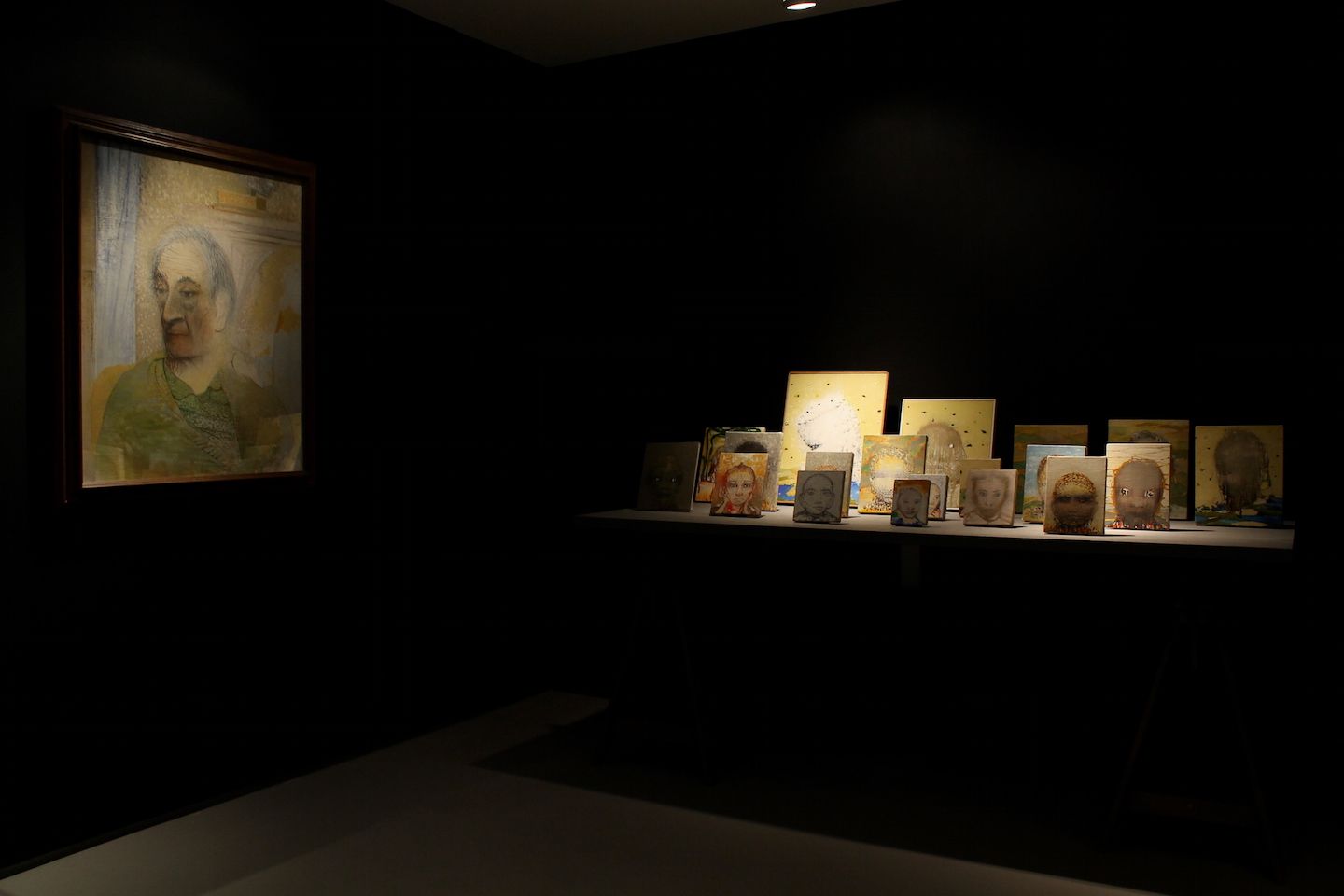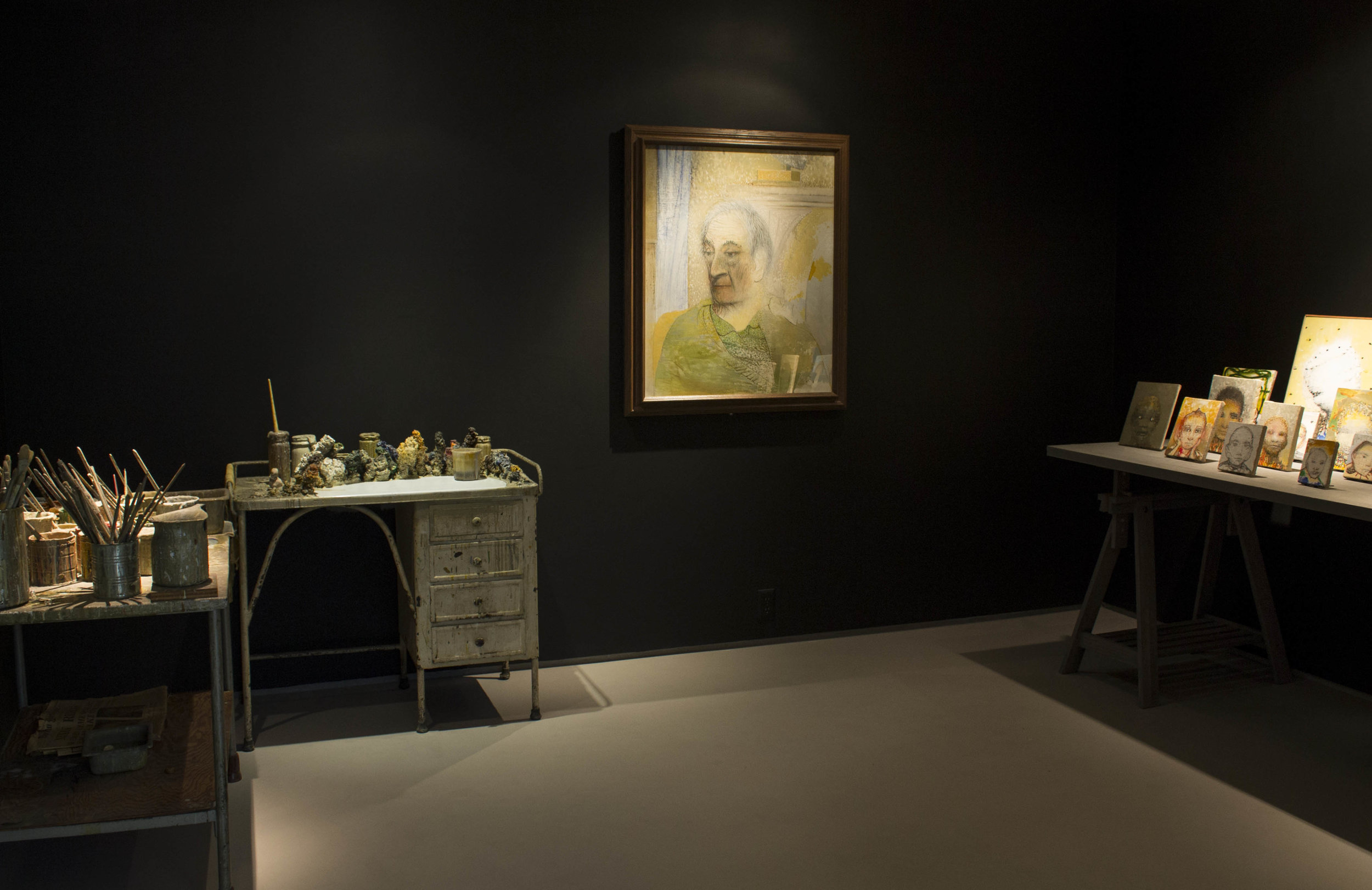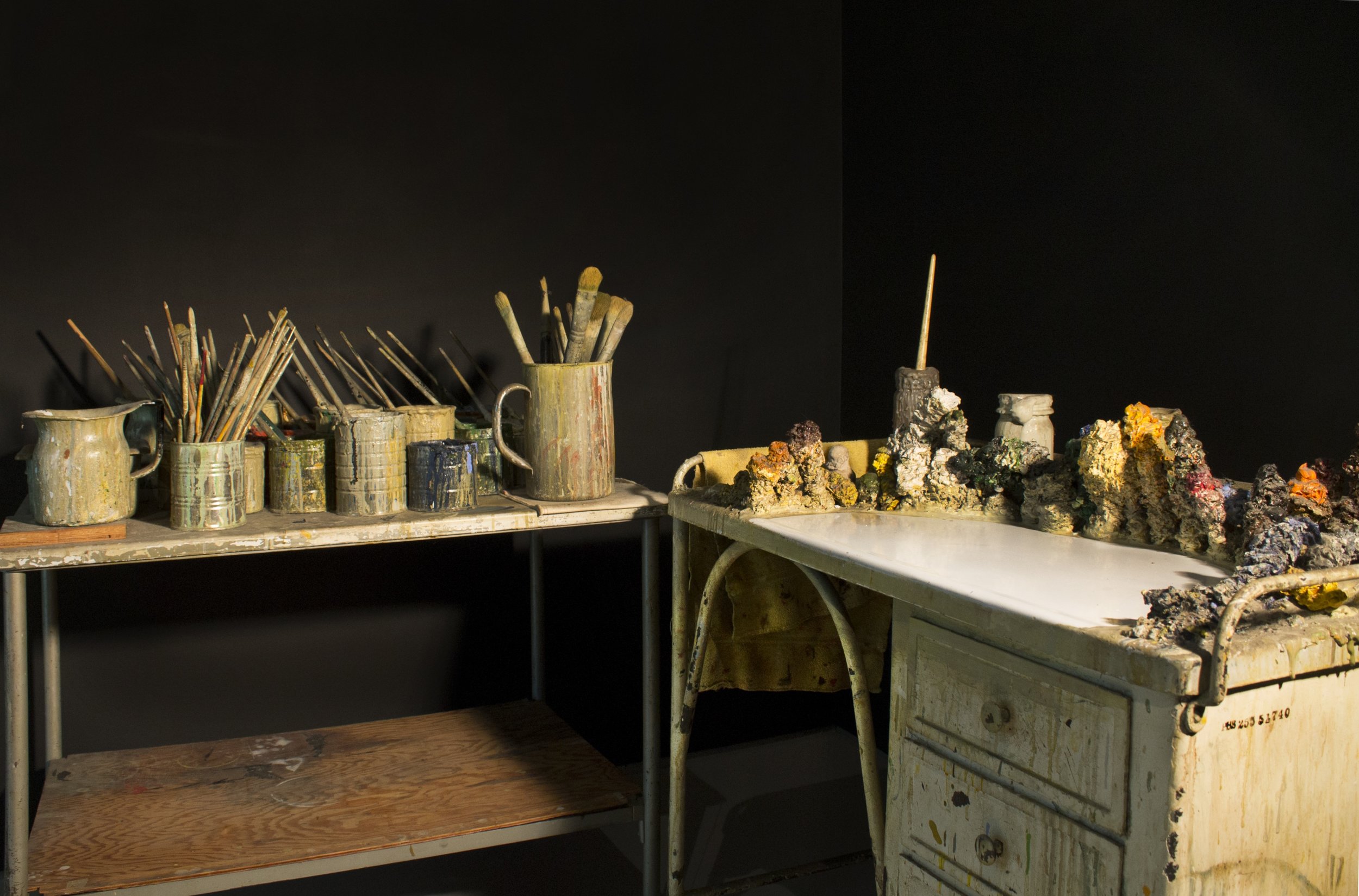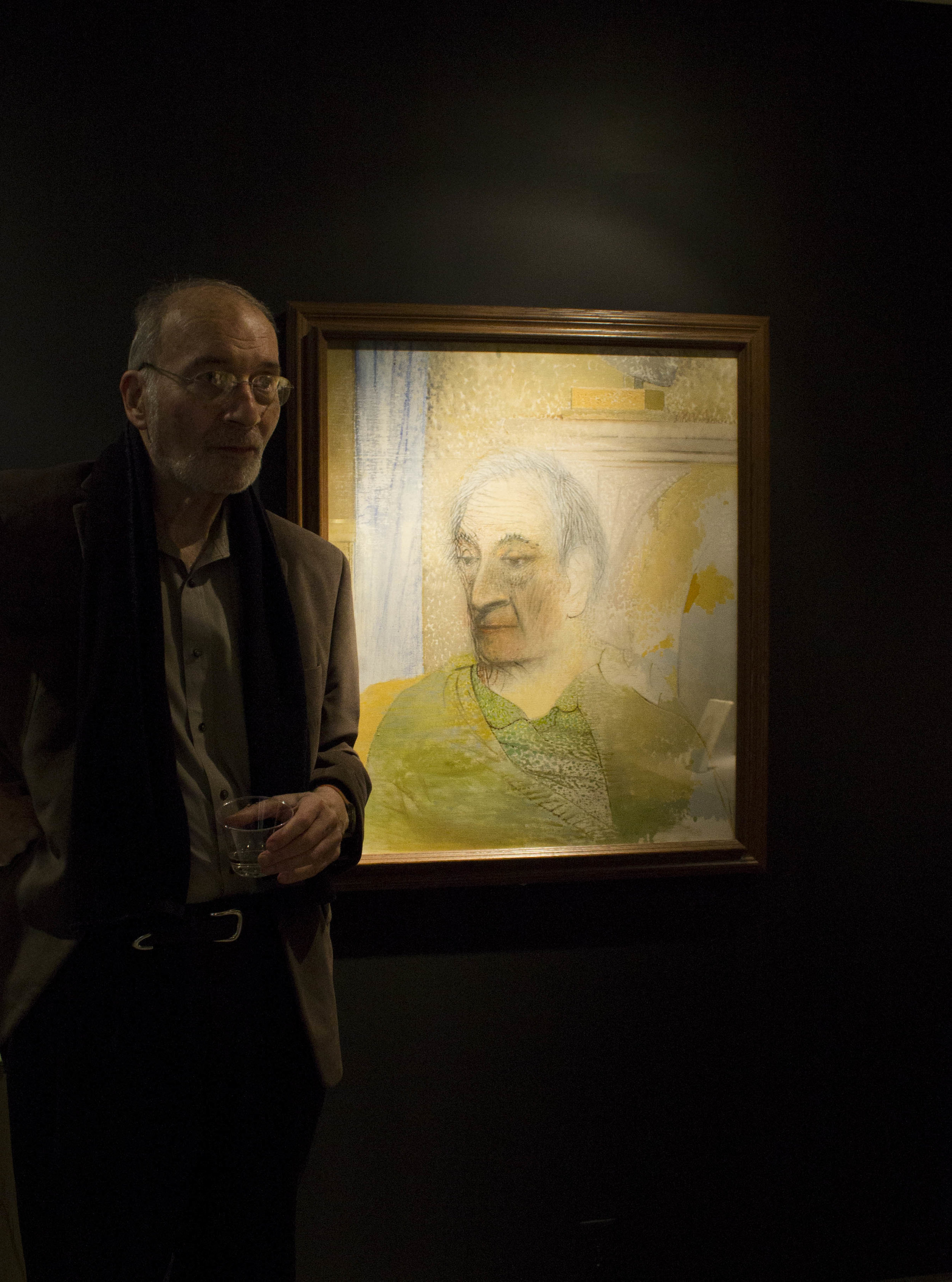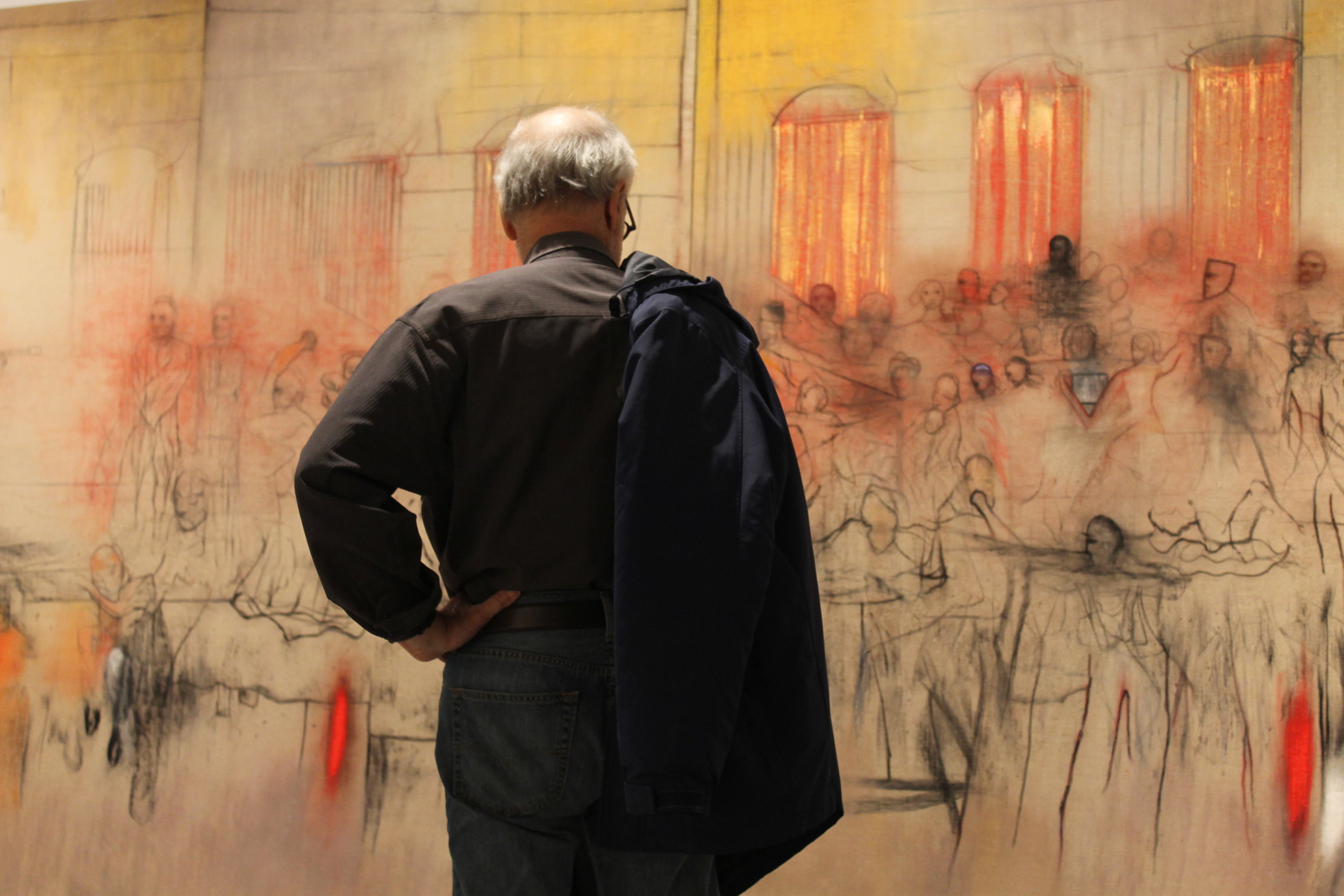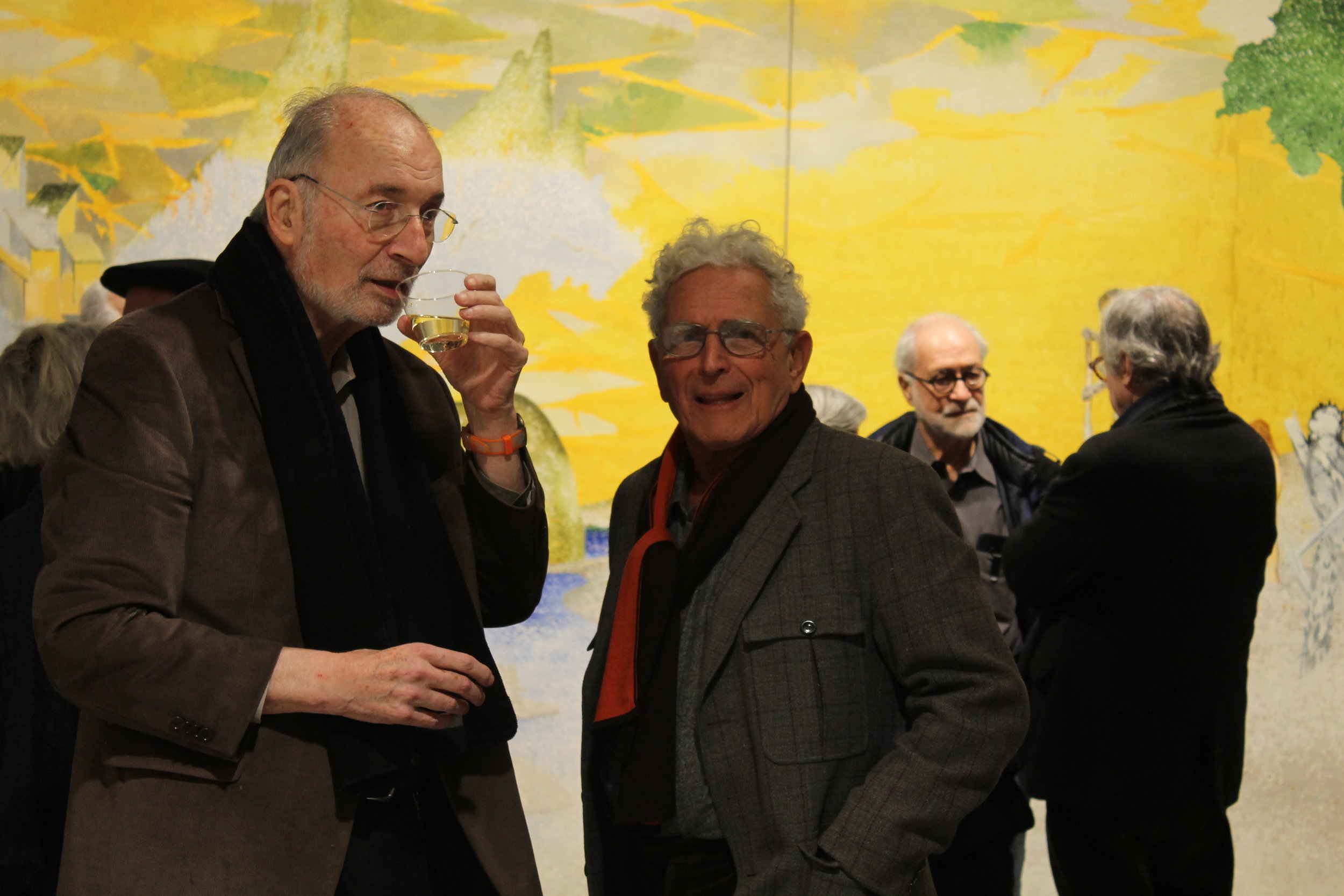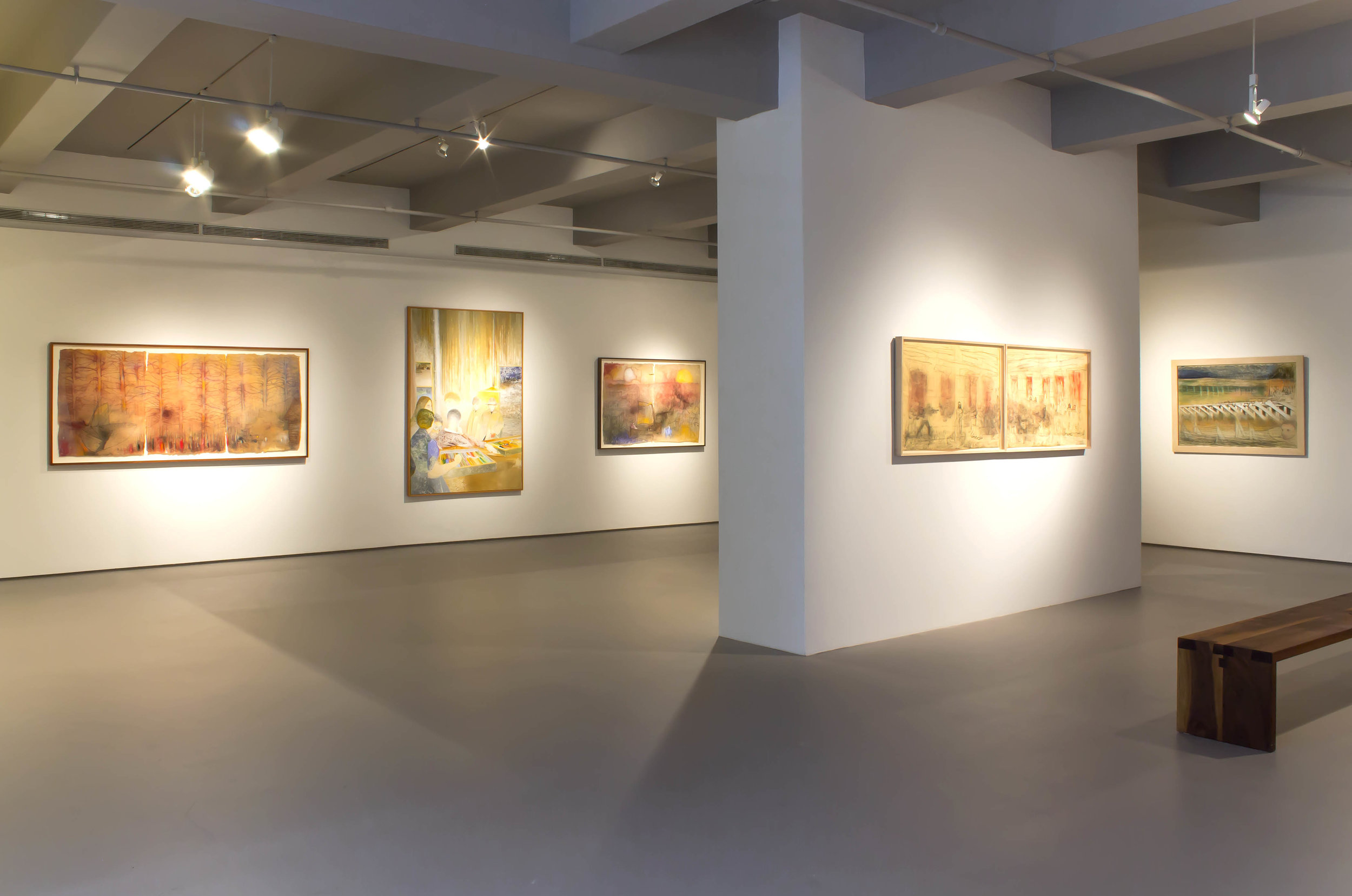The Still Open Case of Irving Petlin
November 8 – December 20, 2014
Nearing his 80th birthday, Petlin has shared with his contemporaries the aspiration to “investigate the truth’ and its underlying ideological, philosophical and moral assumptions, as well as the ambiguities involved in refusing to view ‘reality’ in isolation from the social, economic and political contingencies and historical contradictions. His early subjects, drawn from the experience of immigration and diaspora, reflect his anarchist, socialist, internationalist and republican leanings. In totality, Petlin and Leon Golub, as well as Bacon, Freud and R.B. Kitaj would all connect in the realm of psychological narrative.
Born in Chicago in 1934, Petlin didn’t read children’s books, but rather the daily newspaper his father brought home. Steeped in current events, and maps of Europe, he became engaged as a child in the unfolding events in his family’s homeland. Petlin’s obsession with drawing made him appear antisocial, but his artwork reflected an awareness of the news during the war-torn times of his youth. Panoramic battle scenes enchanted the imaginative child. The Petlin families had immigrated from Poland to the Wicker Park neighborhood of Chicago (called Little Poland), and it was from there that he was awarded a scholarship to the School of the Art Institute of Chicago at age 17, followed by further post graduate studies at Yale University. Following an engagement of military duty at the Presidio in San Francisco along with a studio in the infamous “Monkey Block” with Elmer Bischoff, Petlin then settled for several years in Paris with the assistance of a Ryerson Fellowship. Petlin achieved a great and enthusiastic following in Paris which culminated in a mid career survey of his work at the Palais de Beaux Arts in Brussels (1965) which was completed prior to his return to the United States, partially in response to the United States’ intervention into Vietnam as well as the Race Riots in the South. Along with activism, including organizing the construction of The Peace Tower (1966) in Los Angeles, as well as the activities of the Artists and Writers Against the War in Vietnam over the next decade, Petlin began to view the Old Testament as a “prefiguration” of contemporary history. While Petlin believes himself to be essentially non-religious, he admits that he can never shed the historical struggles of being a Jew. With works that strive for poetry rather than journalism, Petlin places himself as a distant observer. Memory, not simply as the resurrection of one’s past, but also the past of others is present in his mind simultaneously, each element reflecting light of all the others. For Petlin, there has always been a hunger to see everything at once, with a startling and enduring relevance.
Petlin’s work is present in numerous Public Collections in the United State and Europe, and extensive biographical online publications are available from the gallery’s website www.kentfineart.net. For further information, please contact Douglas Walla (dkw@kentfineart.net).
RELATED EXHIBITION PRESS
"Irving Petlin Looks back on Five Decades of Painting and Drawing"
Artnet News | November 8, 2014 | Eileen Kinsella
"All that is Marvelous (and Intolerable): Irving Petlin's Inferno"
Shifting Connections | December 13, 2014 | Kathleen McQueen


